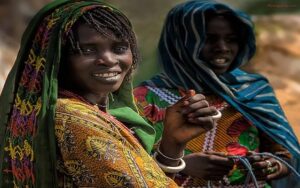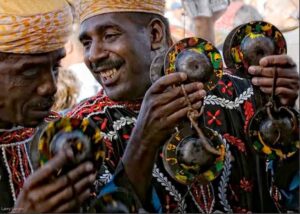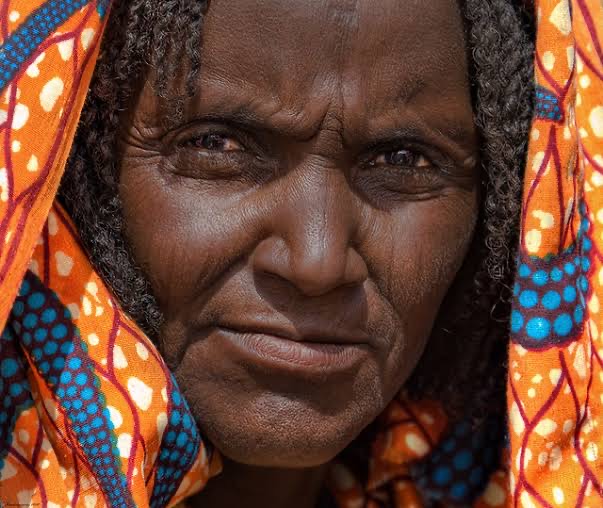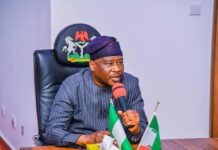The Kanuri Tribe: From a 9th-century loosely held pagan group to being an epitome of statecraft, by A.G Abubakar
The crystallisation of the Kanuri identity goes back to the conquest of the cluster of semi-nomadic pagan tribes around the Northeast part of the Lake Chad basin, by one Saif ibn Dhi Yazid, a Yemeni warrior, in the 9th century.
The tribes include the Zagawa, Tubu, Kanembu, and Bulala, among others. The Kanuri as a tribe or culture was then too nascent to be visible. Yazid is believed to be a marauding slave merchant seeking to establish control over the slave route that connected the central part of Africa to its Magrib region, notably Fezzan of Morocco and Tripoli in present-day Libya.
The establishment of formal control over the then amorphous groups set the process of state formation in motion. Before then, life among the various groups was characterised by both intra and inter tribal wars, reminiscent of life in the state of nature which the English philosopher, Thomas Hobbes, in his seminal work, the Leviathan referred to as “nasty, brutish and short” where people or tribes engage in “war of all against all” (bellium omnium contra omnes).
READ ALSO: The Jukun Tribe: Into the enduring traditions of the mighty Kwararafa Kingdom (Pictures)
The arrival of Saif Yazid on the scene and the subsequent introduction of Islam marked the beginning of the creation of both individual and group identities under the unifying banner of the light of Islam. According to Henrich Barch and R. Palmer’s “Sudanese Memoirs” (A Royal Chronicle, Girgam), which was uncovered in 1851, it was asserted that Saif ibn Yazid conquered and united the various groups under his leadership.
This experience changed a hitherto pagan disposition to a collective and individual Islamic outlook under the central authority of a single leader, Saif Yazid. It is from the word Saif that the Saifawa Dynasty of the later-day Kanuri rulers called Mai was born. The Mai Dabalemi is one of the most prominent.
This development is consistent with one of the theories of state formation called the “crisis (conquest, war) theory,” which posits that a community/society is formed through the imposition of a stronger power over smaller ones. Or a greater civilisation over a weaker one. Scholars like Charles Tilly hold the view that “war made the state, and the state made wars.” In the same vein, Herbert Spencer believes war and conquest play a huge role in state formation like the Kanem Empire. The other concepts include the evolutionary process of state formation as espoused by Emile Durkheim’s The Division of Labour (1893), R. Spencer (1874) and Bala Usman (c.2006).
READ ALSO: The Mandi tribe where fathers marry their daughters (Pictures)
These scholars posit that societies/states evolve through a process of division of labour and specialisation among a kinship group, over time. In the case of the Kanuri, it was the arrival of the Yemeni Yazid (850 AD) that set the ball rolling, similar to the advent of Bayajida from Baghdad, Iraq, in the Hausaland. This is not discarding a 7th century Jewish references to “the existence of some strange races/people, around a huge Lake” in “Qummra” a corrupted version of Sub-saharan territory being ruled by Saif ibn Yazid, a man of Judaic extraction.
The history, historicity and historiography of most African societies are suspect, because they were written by “outsiders”, including those about the Kanuri. For one, the legend of the Saif ibn Dhi Yazid can’t be reconciled because history tells that he existed and ruled Yemen from 571 to 575. The name Saif (sword) is believed to be an epithet for his bravery with the sword in battles, while the patronymic Dhi Yazid is about the elite ruling tribe of Yemen of the time. His actual birth name was Ma’dikarib ibn Abu Murrah al-Fayyad (Tabari, Ibn Hisham, in Tarikh Tabarani). It is, therefore unlikely that the founder of the Kanem Empire in the 9th or 10th century was the same Yemani personality given over 300 years gap between the two Saifs.
The most probable explanation could be one of the two: his later-day scion or a local warrior who may have fancied his name and valour, and adopted it. For instance, it was fashionable in the 80s and 90s for individuals to pick a nickname, Gaddafi or Saddam, in reverence for the late Libyan and Iraqi leaders. History may have yet to unravel the two Saifs puzzle.



The question is, at what point did the Kanuri identity manifest in linguistic and cultural terms? Obviously, it was with the arrival of the Saifawa leadership. Before that, it was the Kanembu, Toubou (Tubu), Zagawa, Bulala, and Sau (to the west of Lake Chad). The language being spoken, Kanuri, is thus an amalgam of elements of these various languages. The proof of the assertion was that despite the people’s close affinity with the Arabs, the Kanuri language belongs to the Nilo-Saharan branch, along with the Luo of Kenya, the Dinka of South Sudan and the Songhai languages of Niger and Mali. This is unlike the Arabic, Hausa, Hebrew, Oromo and Amharic of Ethiopia, the Babur (Pabir), Bole (Bolewa), Hindi, etc that belonged to the Afro-Asiatic group. The Fulani, Yoruba, and Igbo are of the Niger-Congo (Greenberg, J. 1963).
Just like the Kanuri language, the ethnicity is equally a later creation going by what scholars posit in terms of meaning and evolutionary time. There are two popular schools of thought on the name. One, “the stick carrier,” implying “nomadism.” For “ka” is believed to mean stick, while “noor” means light, as in light-skin. Thus, the word Kanuri loosely means stick-carrying light-skinned person (s).
This is similar to later-day Kanuri reference to Hausa as Afuno (leather-wearing people). And the Hausa referring to the Igbo as Nyem miri (give me water), signifying a new group coming into a new environment seeking water to drink after a long, exhausting journey.
The second school of thought believed that Kanuri means those who have “seen the light” presumably the light (noor, nur) of Islam. Whichever of the two theories holds true, the Kanuri identity came after the arrival of Saif Yazid, certainly preceded by the Kanembu, Bulala, Bagirmi, Bulala etc. Its history can not, as such, be claimed to be as deep or “more original.” Besides, the phenomenon of “seeing the light” was open to all the existing groups at the time, which made the emergent identity a syncritical one.
READ ALSO: The Kilba/Hoba People of Adamawa: Custodians of remarkable culture, history (pictures)
After about a millennium, the Kanuri identity tradition had certainly endured. But just like its name, the driving forces have been alien. The first dynasty that ruled traced its roots to Yemen. The second and current dynasty is of Kanembu origin through Muhammad El-Kanemi. The question here is, where is the leadership that is indigenous to the Kanuri? The one that held sway before the people “saw the light.” The leadership of that band of pagan minority tribes living among the Zagawa, Tubu, Bulala, Bagirmi, and Kanembu in the 9th century?
Equally checkered has been the Kanuri road to “greatness.” Having been forged from different contending forces and influences, stability had been a real issue in Kanuri history. It all started when the scattered pagan groups around the eastern Chad basin were cobbled into an empire by one of the well-known Saifawa leaders, Mai Dunama Dibbalemi, in the 13th century, though there had been smaller points of power before then, precisely by the 10th century AD. Before then, according to Henrich Barch, the Diguwa dynasty of the Zagawa exercised great influence over the other groups. Njimi became the capital of the fledgling Saifawa’s Kanem empire until it was abandoned in 1380. The site is now part of the present-day Republic of Chad.
After a period of glorious growth, Kanem was sucked into the Bulala in a series of wars between 1380 and 1390, under what scholars believe was the leadership of Idris Dunama III, after suffering internal decay and struggle for power. A surviving splinter group moved westwards to Ngazargamo and established the Kanem-Borno in 1472 by Mai Ali Gaji. The portmanteau of the name is a way of paying tribute to the original Kanem Empire. Before arriving at Ngazargamo, the group stayed at many locations according to records. They also met and mingled with many autochthonous communities that mutually enriched others’ culture and lexicon. These groups include the Sau, the Marghi, Badawa, Babur (around Gujba), Mandara, Chibok, Wula, Gamargu, etc. The Empire prospered for a couple of centuries before the power struggle set in.
The Empire’s conflicts with the Jukun (1644-1680), Mandara (1781), and neighbouring Hausa city-states took a heavy toll on it. According to Kyari Tijjani in “Meme, Pre-colonial Borno” (1993), the Mandara forces under Mai Bukar inflicted a heavy defeat on the Kanem-Borno army from which they never fully recovered till the Fulani jihadist sympathisers completed the routing.
The Empire was attacked by forces sympathetic to the Dan Fodio, Fulani Jihad. Goni Muktar led the attack on Ngazargamo in 1808. He couldn’t take over the Empire but was able to dislodge the seat of power, Ngazargamo. It was actually the forces of the Biu Kingdom under Mari Watirwa (1793-1870 AD) that cut off part of the reinforcement supply routes being provided by Buba Yero, Gombe, that saved the day (Buba Yero, Mari Watirwa, ref; britannica.com).
READ ALSO: Guardians of Heritage: Glance at Bolawa tribe of Fika (Video)
One of the fiercest battles between Biu and the Fulani forces took place in the Gunda-Gulani axis, not far from Borno (Ɓərmi, Gombe State), a place where Sultan Attahiru, while on “flight” from Sokoto, was tracked down and killed by Colonial forces in 1903.
The Empire was saved, but the capital at Ngazargamo was forced to relocate to Kukawa in 1814 AD, under Shehu Muhammad al-Amin El-kanemi, whose family had just taken power from the Saifawa rulers. The Muhammad El-Kanemi family actually served as a spiritual guide during the reign of many Mais of the Empire, before one of its scions decided to take over power, after almost six (6) centuries of Saifawa dynastic leadership.
The change of leadership, which was occasioned by internal powerplay and strife, set in motion a prolonged period of instability that saw the rise and fall of more than a dozen leaders over a short period. During this period, Rabih az-Zubair, a warlord, seized control over the Empire. Then came the British and French Colonial powers as part of their promotion of territorial ambition.
They sacked Rabih after bouts of bitter battles. They got the Empire split into two spheres of influence; a Shehunate at Dikwa (later Bama) under the French and the installation of a rival brother at Maiduguri, a newly established British military outpost (1907). The colonial occupation basically brought the curtain down on the glorious but torturous history. A history rooted in the humble disposition of an acephalous pagan tribe of the Northeastern Lake Chad basin region in the 9th and 10th centuries.
By A.G.Abubakar
agbarewa@gmail.com
Follow the Neptune Prime channel on WhatsApp:
Do you have breaking news, interview request, opinion, suggestion, or want your event covered? Email us at neptuneprime2233@gmail.com





